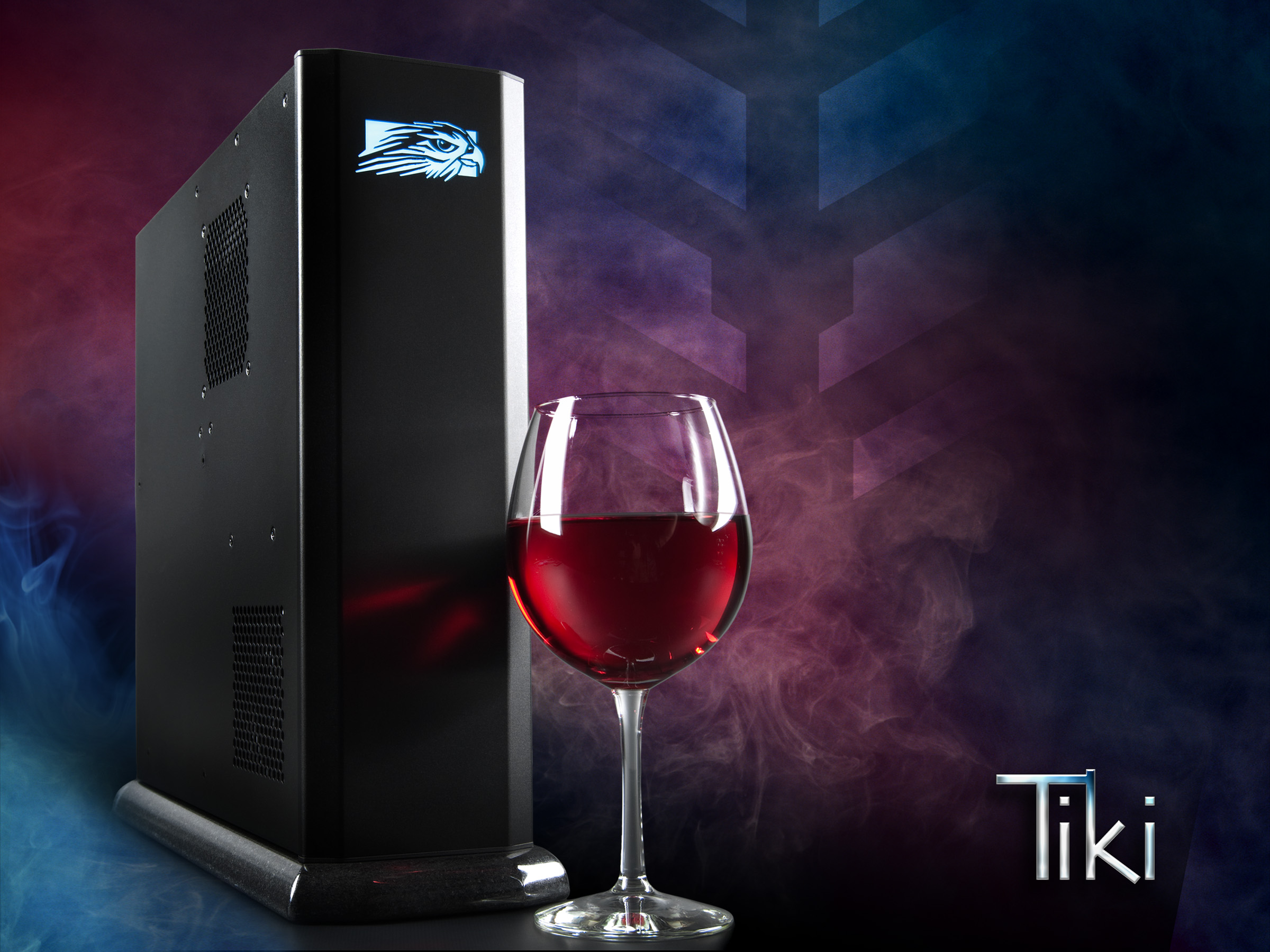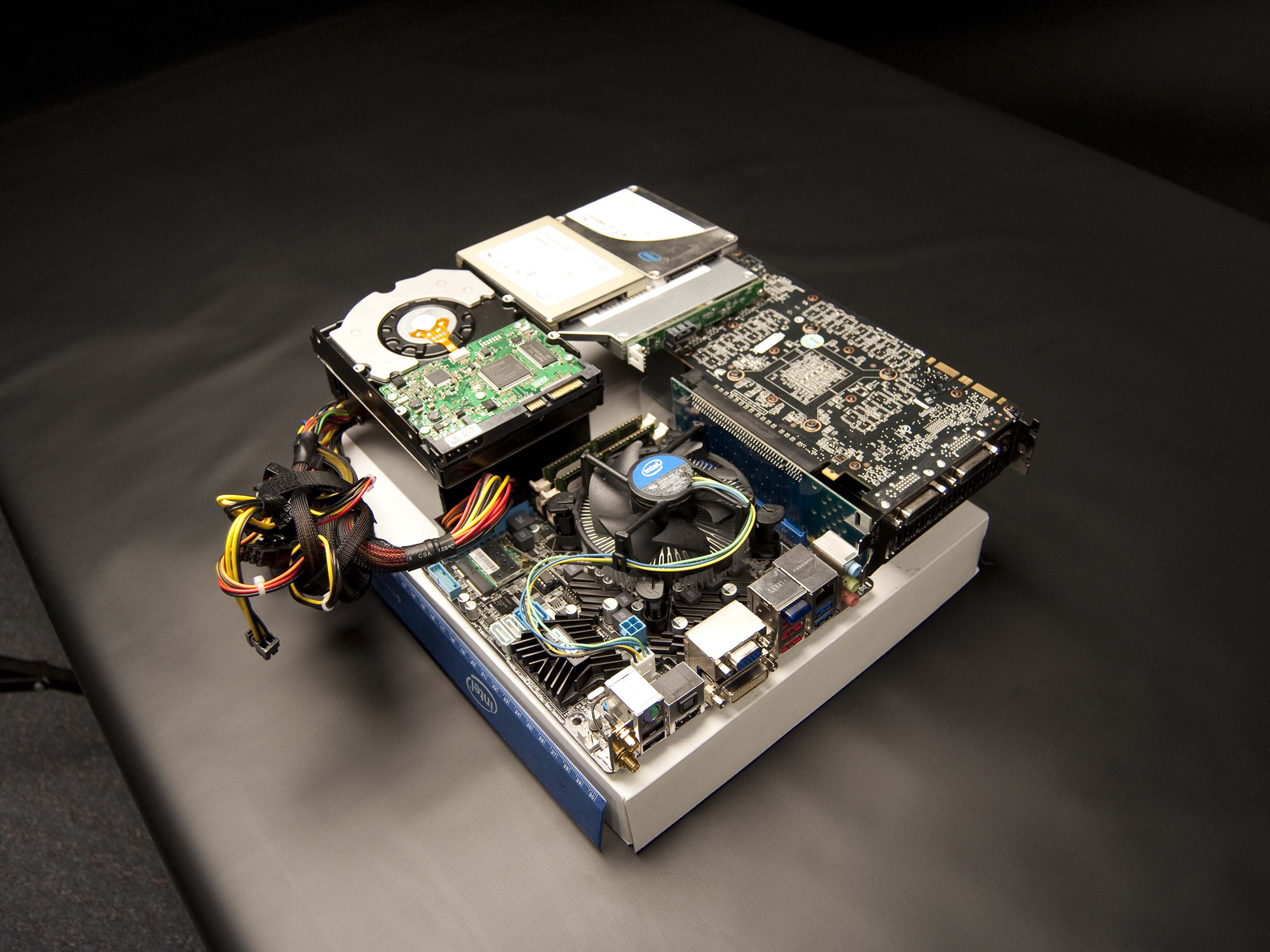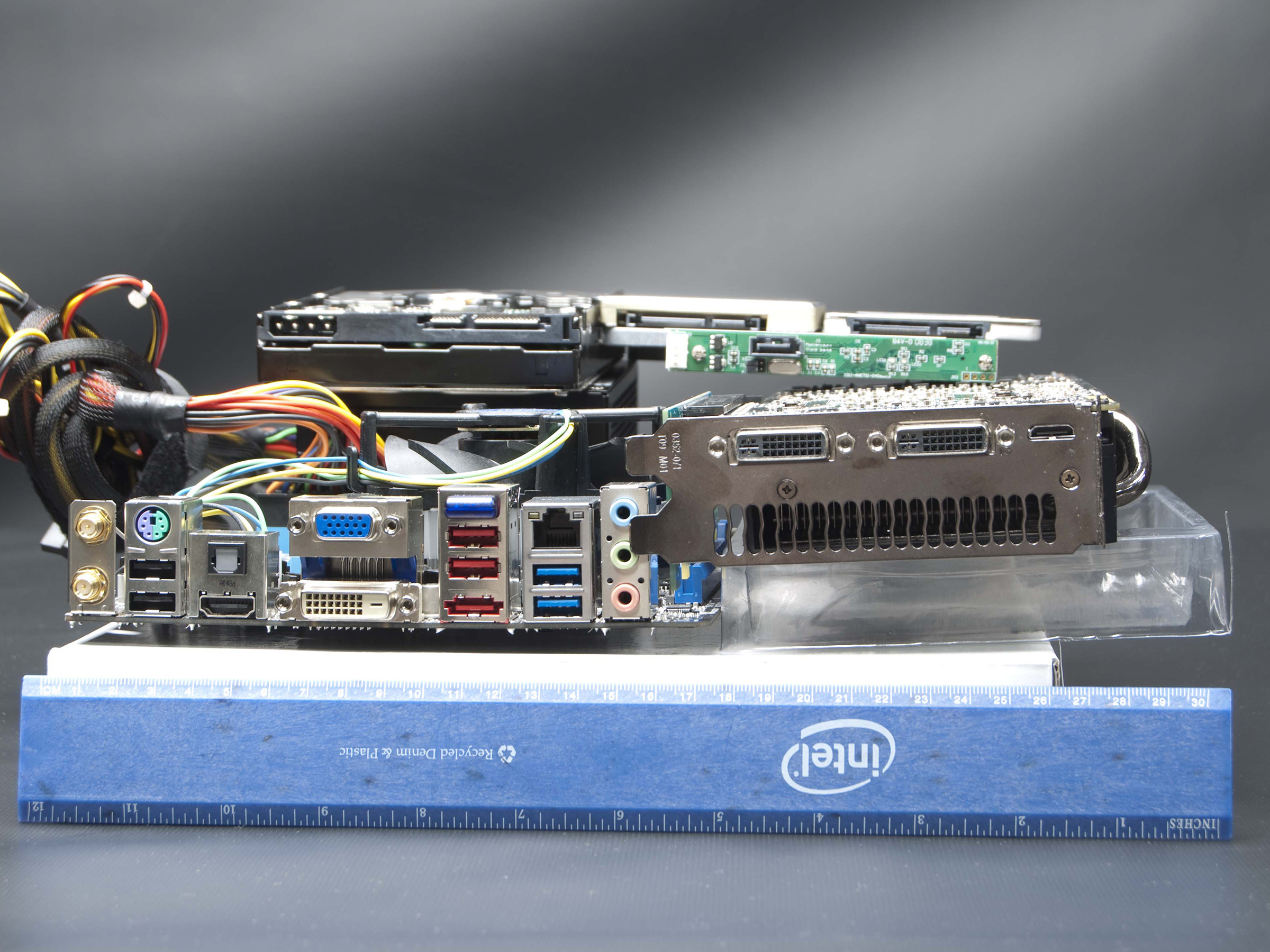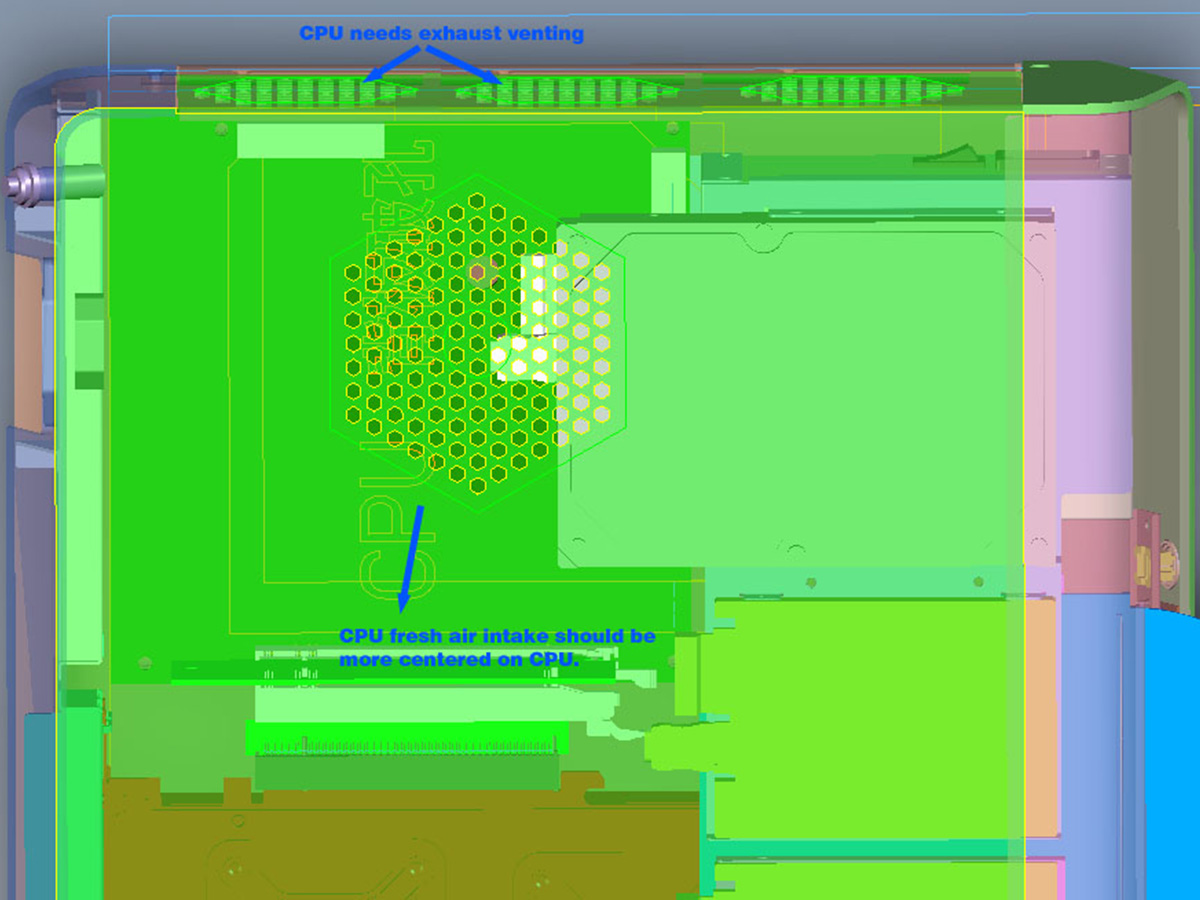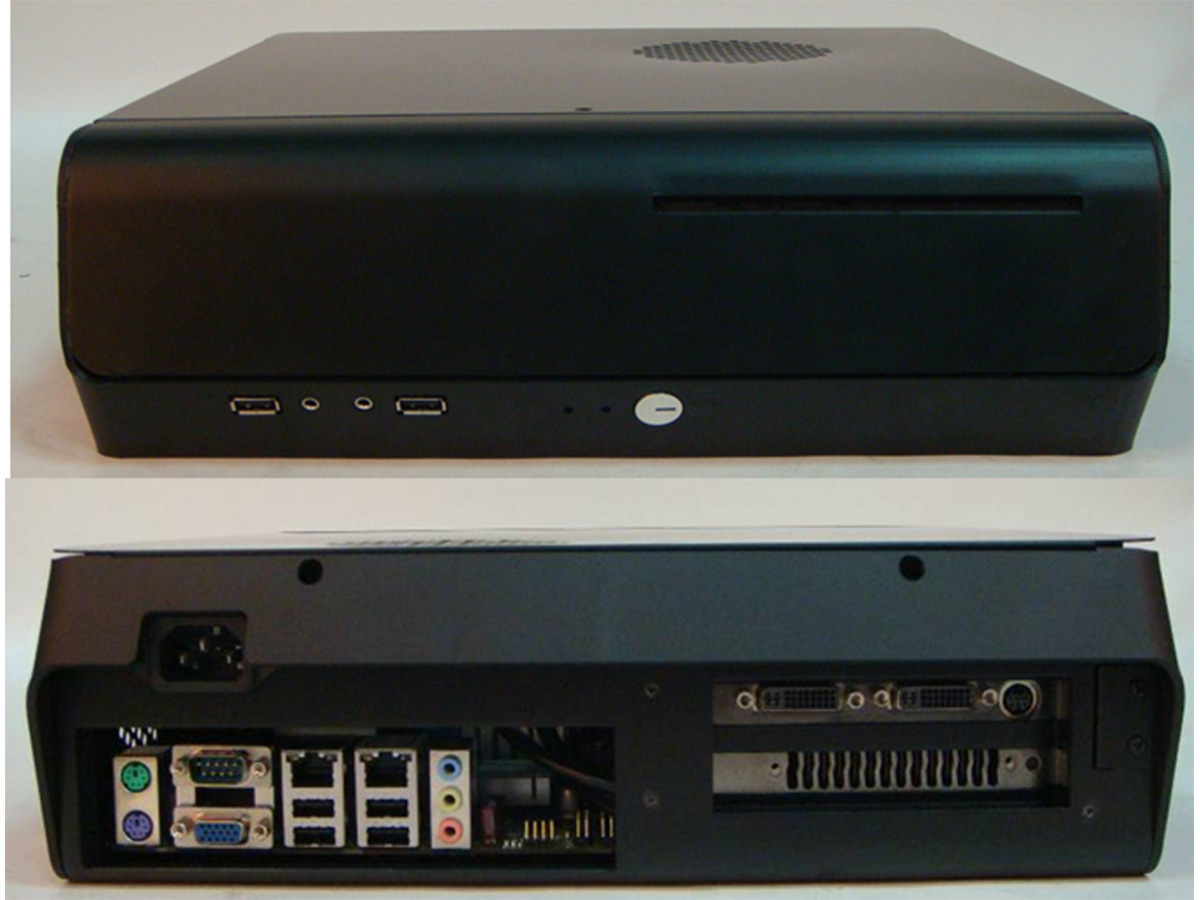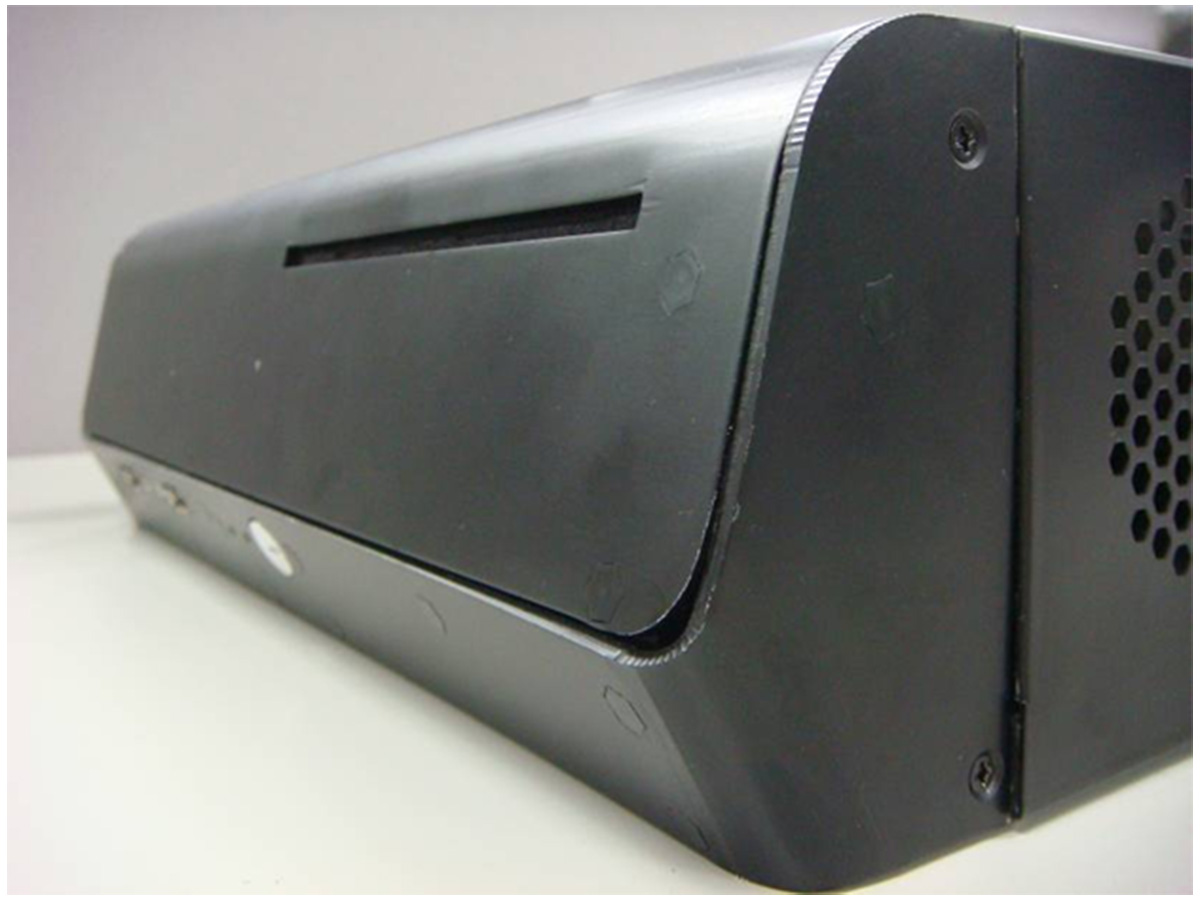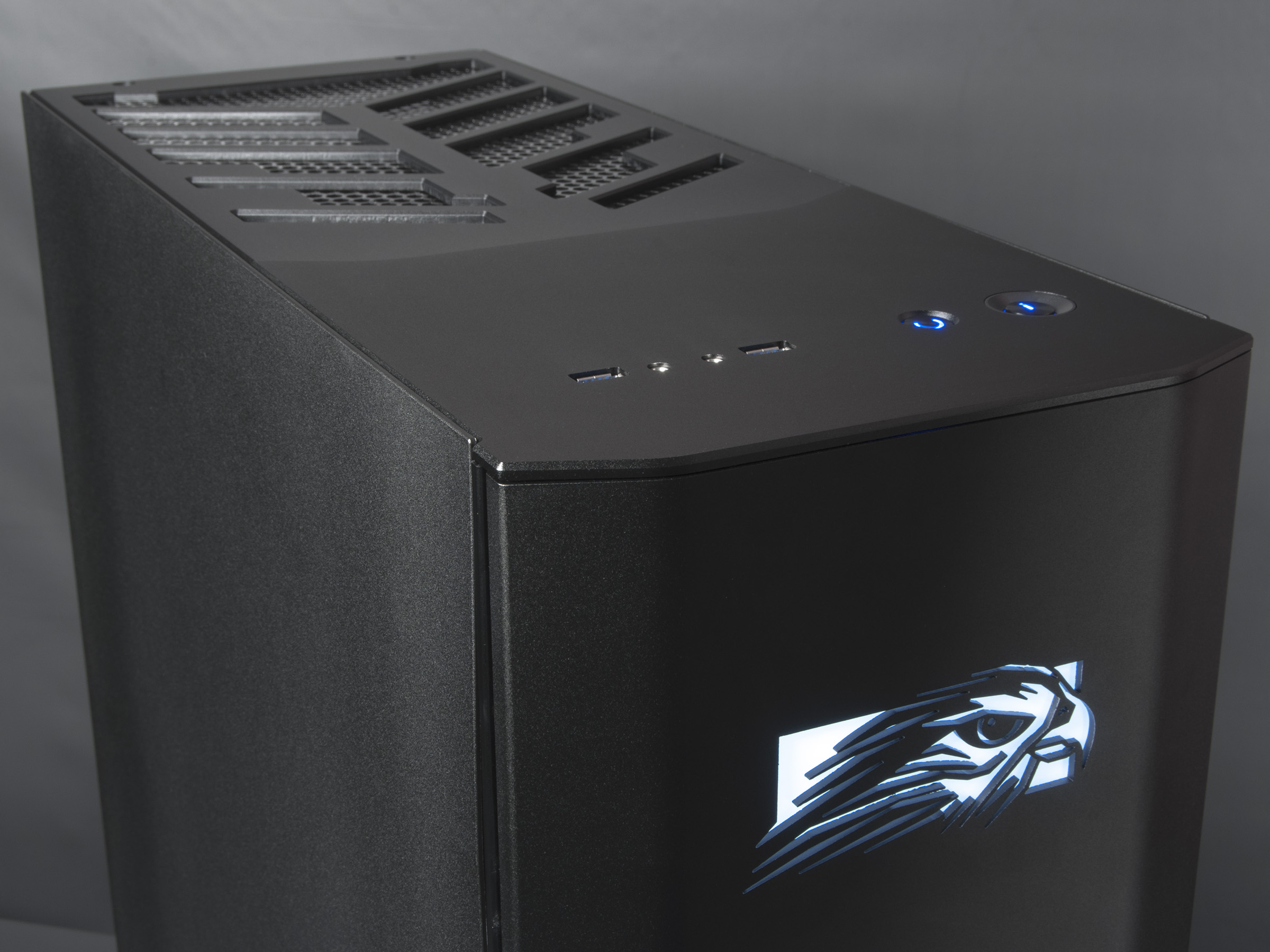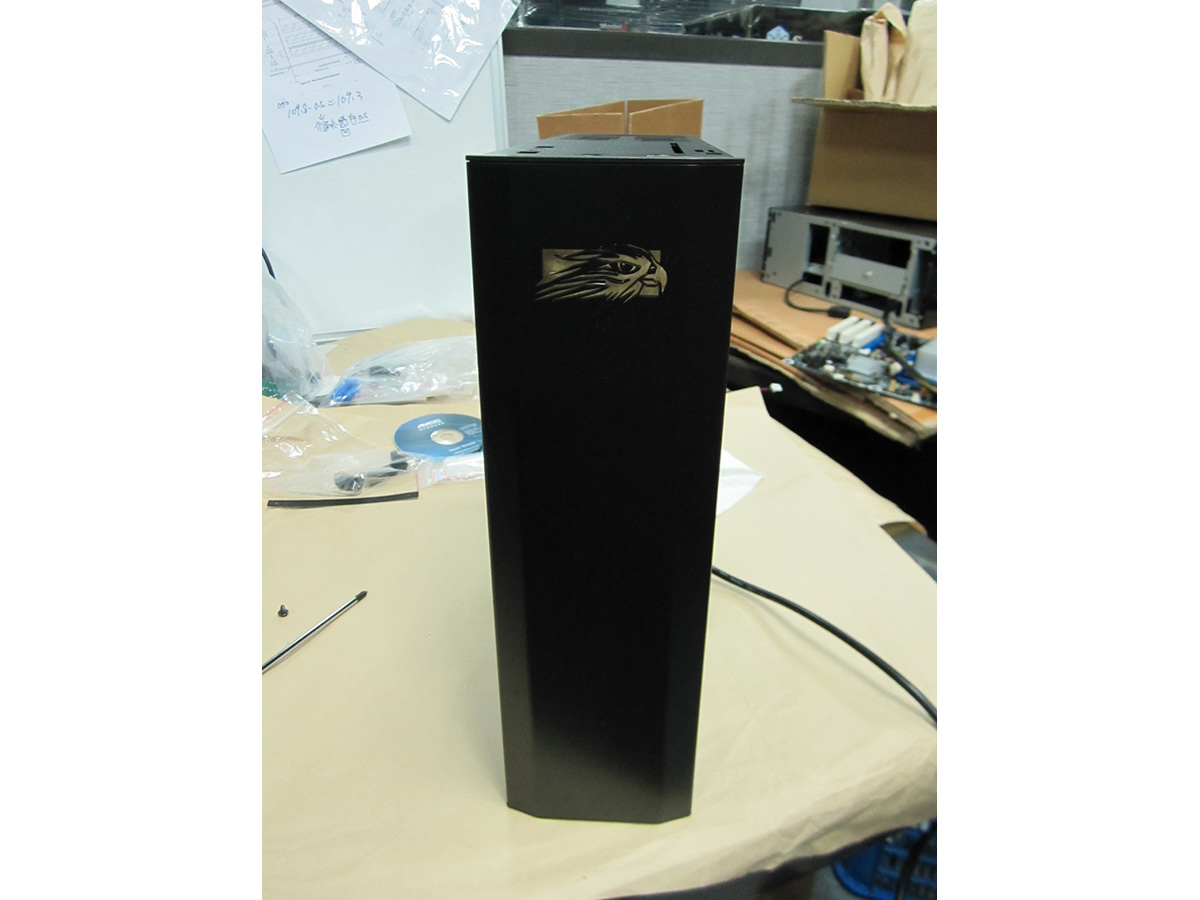Meet The Tiki: Core i7-3770K And GeForce GTX 680 In A Mini-ITX Box?
Falcon Northwest sent us a mini-ITX-based platform worthy of enthusiast lust. We asked the company's president, Kelt Reeves, to walk us through the process of designing a tiny desktop packing more performance than most power user-oriented rigs.
Falcon Northwest Gets Tom's Hardware's Attention
I already know what a Core i7-3770K can do. I’ve literally spent days benchmarking GeForce GTX 680s, and it’s safe to say I know how they perform, too. So, when a system builder wants to ship me a machine loaded down with the hardware I already have sitting on my test bench, there’s generally not a lot to get me excited.
But when I see those parts put together in a way that I, having built hundreds of machines, know I couldn’t equal, then I want to know more.
Kelt Reeves, president of Falcon Northwest, surprised us by sending the company’s new Tiki to the Tom’s Hardware office, even though we haven’t done system reviews in years. And yet, the Tiki’s size immediately impressed. They got a Core i7-3770K, a GeForce GTX 680, and 1 TB of solid-state storage in there?
Right away, I thought it’d be cool to step through how the Tiki came to be, and what it actually took to cram high-end hardware into a quiet mini-ITX-based chassis. I asked Kelt if he’d be willing to tell the story to our audience, and he agreed. What follows is from Kelt's perspective, and it should be quite the tale!
-Chris Angelini, Worldwide Editor-in-Chief
March 1, 2011: An Idea And A Pile Of Hardware
We’ve been into small form-factor systems ever since creating the FragBox back in 2003. And obviously, smaller is better. But for almost a decade, going any smaller than microATX meant proprietary, power-starved little boxes that weren’t much good for an enthusiast. In early 2011, the stars started to align, portending more power-efficient CPUs and GPUs. Mini-ITX motherboards were looking promising too. I wanted to build a smaller system that would leverage all of those advancements. So, I piled up parts in a way I thought they’d work thermally in a tower and photographed them from various angles. I wanted to know the minimum dimensions a well-loaded enthusiast system might fit into. Forget power, cooling, cabling, and noise. Physically, just how much could the parts be condensed? The answer turned out to be about 12” x 12” x 4”.
Tiki Takes Shape As A Four-Inch-Wide Tower
Typically, a system cannot be slimmer than the 5” a graphics card plugged into a motherboard consumes. But I wanted to use a 90-degree riser card to turn the video card sideways, creating a thinner tower. This setup had been done before in HTPCs. However, power and heat would be limiting factors. In fact, the early-2011 hardware in this picture probably wouldn’t have worked. Nvidia's GeForce GTX 480 was a power-gobbling beast, and the 350 W SFX power supply wouldn’t have cut it. But the roadmaps were all pointing in the same direction: more power-efficient components should be on their way. We might be able to make a system this small. Whether we could cool it and then keep it quiet were the unanswered questions. I opened a new micro-tower case design project anyway.
Get Tom's Hardware's best news and in-depth reviews, straight to your inbox.
Before It Was Tiki: Code-Name Cygnus
All of our projects need code names while they’re in development. Intel uses the names of rivers. AMD uses islands. Nvidia uses famous scientists. I name ours after spaceships in movies. This one was “Cygnus” (extra points for anyone who remembers the movie). After showing my component layout pictures to our case manufacturer, its engineers pitched me on several external aesthetics. That’s not usually the way we work, though. Usually, I pitch them what I think is a great-looking case and they tell me “metal doesn’t bend that way.” Then, we compromise somewhere in between. Instead, Cygnus Prototype 1 took shape from one of their concept drawings.
Virtual Design Begins
Several months of emailing 3D models back and forth with our case manufacturer began. This is where the fantasy of “I want to make a case exactly the size of these parts in this pile” met the manufacturing reality of “this part needs to attach to these parts using metal that needs to be this thick.” The 3D modeling stage is also where I try to visualize every conflict, wiring path, heat source, and thermal transfer. Essentially, the whole system working, in my head.
September, 2011: Cygnus Prototype 1 Is Complete
The factory sent these photos to us. Prototypes are not glamorous. First prototypes, especially, are usually pretty rough. Really, their purpose is to test basic build functionality and get an idea of the look. Little or no effort was put into aesthetics at that stage. But, like Michelangelo looking at a block of marble, you should be able to see the statue within.
It’s hard not to be really disappointed at all the work that went into envisioning a perfect, beautiful, little system, and then you get this ill-fitting beast as the first look at it. Needless to say, she didn’t look anything like her profile picture.
At Least She Had A Great Personality
Inside, beauty was happening, though. Cygnus’s layout and overall size were coming together much as I’d hoped in my first “pile of stuff and a ruler” concept. It’s always neat to see ideas you’ve worked on only virtually in CAD come together physically (even if early prototypes are really expensive, hand-made, one-of-a-kind, and ugly).
Cygnus Prototype 1 Is Scrapped
See that horrible gap on the corner? Evidently, metal just doesn’t bend that way…at least not well. I was starting to hate the look anyway. This just wasn’t Falcon. It looked so much better in CAD than in reality. And since the metal wasn’t handling the curves we were trying to bend, we would’ve had to change the front to plastic to make corners fit right. Falcon PCs are not plastic. So, I scrapped the entire exterior. In fact, this one was so far from what we wanted there was no point in even having it shipped to us. Form follows function, but, for our clientele, the form also has to be beautiful. Back to the drawing board.
Inspiration Strikes Again
Last year, we introduced a completely new chassis for our venerable Mach V line, the Icon2. This full tower has a vertical airflow orientation, is two feet tall, and two feet deep. It’s our largest enclosure, so it’s not right for everyone’s desk. But just about everyone does like the clean and understated look. In the back of my mind, I thought that this was the direction Tiki should go. Prototype 1’s dismal first impression was the push I needed to re-imagine the system with this look. Tiki was going to be “…exactly like you in every way… just 1/8th your size.”
Rework And Repeat
After another couple of months working on virtual layout, the redesign began and the real Tiki started to take shape. I don’t really remember when the “Tiki” name first came to me, but I’m Hawaiian in my mind and love Tiki culture. I liked the idea of a little Tiki idol that was a small representation of god-like power. It just seemed to fit.
Christmas, 2011: Tiki Prototype 2 Is Complete!
Now, this is more Falcon-like. Prototype 2 was a massive leap forward in aesthetic quality, and a lot of re-work was done inside as well. To keep the minimalist front, the optical drive was moved to the top, requiring some juggling of the internal drives. Tiki was also at its final dimensions at this point—a svelte 4” wide, 13.25” tall, and 13.5” deep. That’s 716 cubic inches of volume. By comparison, our FragBox microATX-based small form-factor system is 1225 cubic inches, or 71% larger! Yet, Tiki can handle a 13”-long graphics card, three hard drives, an optical drive, and a 450 W internal power supply.
Tom's Hardware is the leading destination for hardcore computer enthusiasts. We cover everything from processors to 3D printers, single-board computers, SSDs and high-end gaming rigs, empowering readers to make the most of the tech they love, keep up on the latest developments and buy the right gear. Our staff has more than 100 years of combined experience covering news, solving tech problems and reviewing components and systems.
-
freggo I usually do not bother with these 30+ page click stories. They are a pain in the arse.Reply
But.. that story just was too interesting, almost like a crime novel...
Just one more click and I stop.... ok, jut ONE more.
Anyway, it was interesting to see the painful birth of what seems to be a very interesting product; also I don't even want to guess how much $$$ we are talking all things considered.
Still, very interesting and impressive. Would love to see THG do a test, especially the noise part would interest me. I HATE noise and am willing to pay xtra for $ilence :-)
-
Robert Pankiw http://build.falcon-nw.com/Reply
I posted a really nice and long comment that magically got erased.. Basically, it is around 2500 USD for (what I assume) is the shown model (i7, 2 128GB SSDs + HDD, GTX 680 2GB) but for a nice system (i5, 1 256GB SSD, GTX 670) it is 2045 USD. -
s3anister ReplyTiki is our first product that literally could not be built by anyone but an enthusiast.
From reading your article I most definitely agree with you. Quite an amazing build.
And if you still need to get rid of some fans and heatsinks I'd be more than happy to take a few off your hands :D -
xaed Robert Pankiwhttp://build.falcon-nw.com/I posted a really nice and long comment that magically got erased.. Basically, it is around 2500 USD for (what I assume) is the shown model (i7, 2 128GB SSDs + HDD, GTX 680 2GB) but for a nice system (i5, 1 256GB SSD, GTX 670) it is 2045 USD.Reply
All things considered, that extra $500 (I'm thinking it's more assuming they get their parts at OEM rates) isn't THAT bad. -
abhijitkalyane Wow! Just WOW! This is awesome. This is a top of the line build but barely the size of an XBox. Amazing.Reply -
dakkon Toms please do a bench on this thing... Please Please Please... and Mr Falcon CEO Kudos to you, now give the damed machine to Toms and let them Bench it. :)Reply -
Darkerson Very interesting, both the article and the end result product. Would love to see some benchmarks when it is released.Reply -
Menigmand I love a small, quiet pc, but the biggest problem is not the actual size. The main aesthetic problem is that a pc setup will still include a monitor and plenty of wires, a keyboard and a mouse. Having a pc in a small livingroom tends to "take over" the space and make it seem a bit like an office.Reply
That's why I like to game on a laptop, even though I get less graphics performance, the kit can always be folded up and put in the cupboard when I have guests over and need the dining table.
